京友禅/京小紋 京友禅協同組合連合会
kYO-YUZEN / KYO-KOMONYUZEN FABRIC DYEING / KOMON DYEING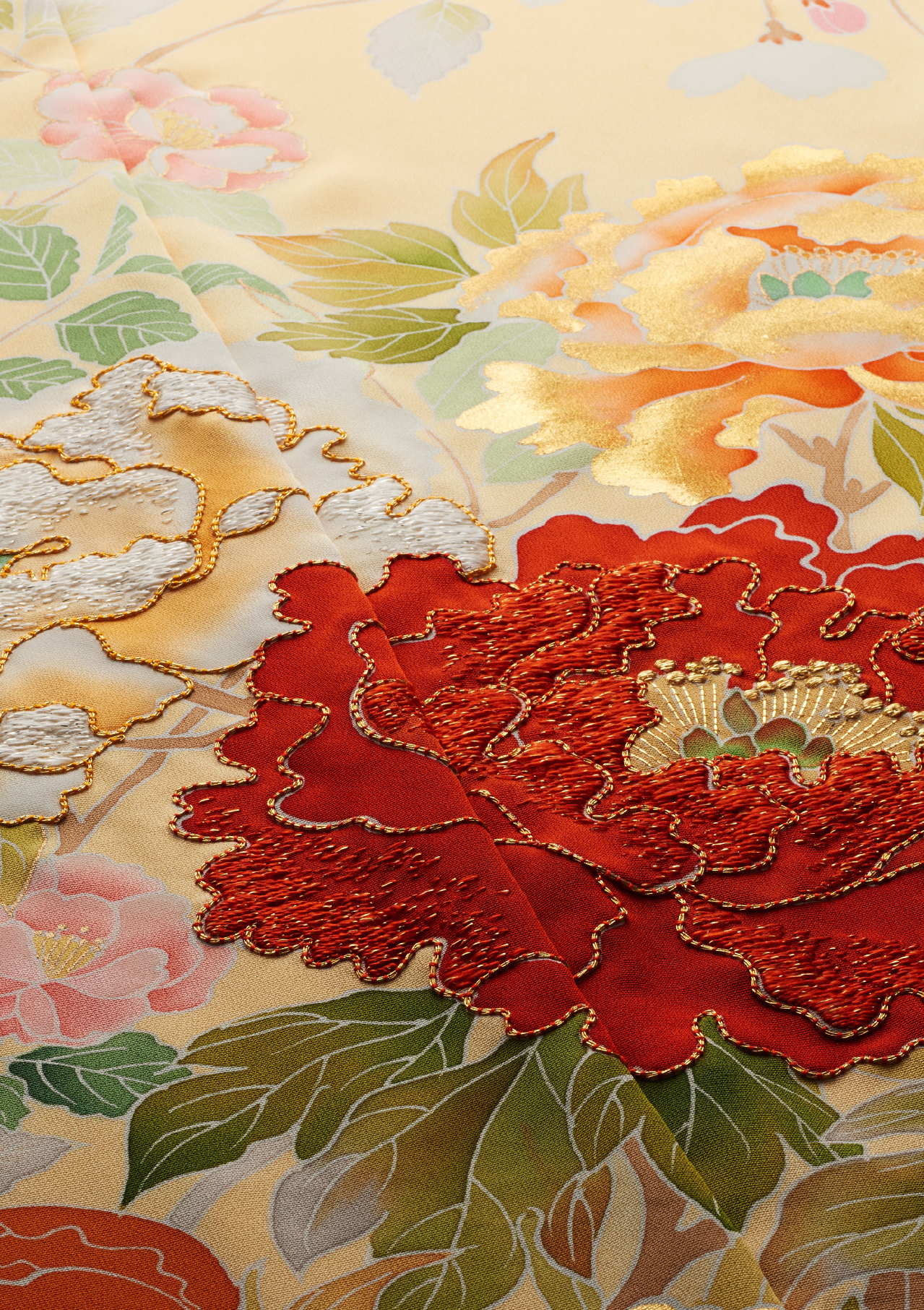 1
1
- 手描き染めの上から刺繍や箔押しなどを加えてより華やかに仕上げるのが京友禅の特徴のひとつ。
華やかな京友禅の着物をまとった女性の姿は、日本を代表する文化のひとつ。友禅染めは、縄文時代(紀元前)から始まったとされる日本の染色の歴史のなかで生み出されたさまざまな技術が集約され、京都で成立しました。その呼称は、江戸時代(17世紀)に活躍した扇絵画家の宮崎友禅斎の画風を取り入れたことにちなんでいます。模様と模様の間に色が混ざらないように糊を引くことを技術の基本としますが、さらに絞りや刺繍、箔押しなどを加えてより華やかに仕上げるのが京友禅の特徴です。明治時代(19世紀)には友禅の模様を型紙に写す「型友禅」の手法が加わり、量産が可能になりました。また、京小紋は、細かな紋様の型染めで、きらびやかな京友禅とは趣が異なる渋さが特徴です。今日では、この京友禅の技術と華やかな美しさをきもの以外でも楽しむため、反物をそのままアートとして飾ることをはじめ、ガラス等に圧着し、アートパネルとして壁を彩ったり、照明に仕立てたりと、さまざまな試みがなされています。
One of the most iconic images in Japanese culture is that of a woman wearing an exquisitely decorated Kyo-yūzen kimono. Yūzen is a dyeing technique developed in Kyoto by consolidating various older methods of dyeing, some dating back to the ancient Jomon period. The name derives from the style of a Edo-period folding fan painter Miyazaki Yūzensai. The basic technique is to apply a special glue to prevent colors from mixing between the patterns. The Kyo-yūzen adds an even further dimension of beauty and refinement with spot tie-dyeing, embroidery and foil stamping. In the Meiji era (19th century), the "kata-yūzen" method of copying a yuzen pattern was introduced, enabling mass production. Another style of fabric is Kyo-komon: fine-patterned textiles with a graceful, quiet and soft feel in contrast to the glittering Kyo-yūzen. Today, the beauty of Kyo-yūzen technique is also enhancing non-clothing design: for example, decorated fabric mounted on glass or acrylic as a stand-alone artwork, or used it as an element of lighting design.
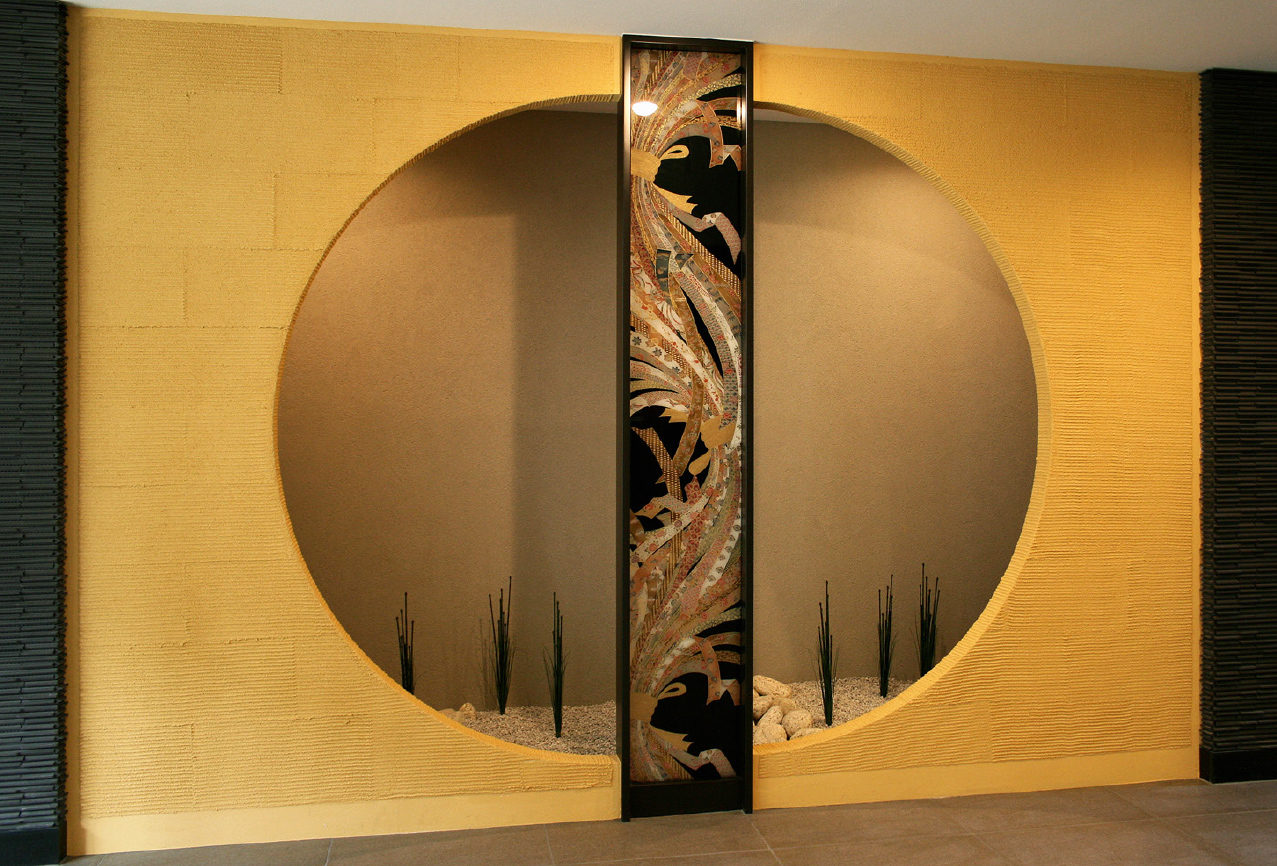 2
2
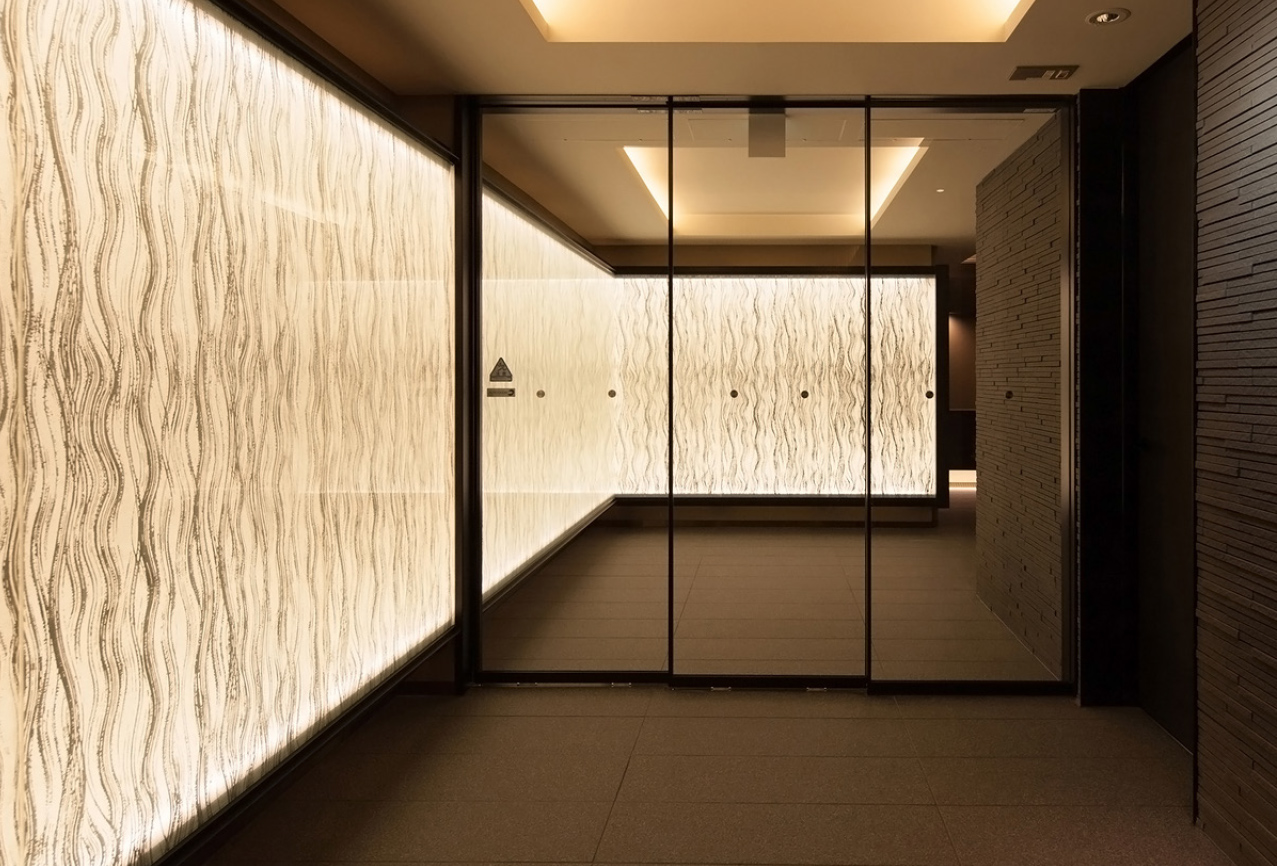 3
3
- : 反物をフレームに入れるだけで、美しいアートに。
- : ガラスの間に反物を挟む特殊加工により、建材として活用可能になった。
(1,2,3 すべて木村染匠株式会社)
1: Adding refined embroidery and foil stamping onto the hand-painted dye is characteristic of Kyo-Yūzen. 2: A framed piece of cloth can be transformed into a work of art. 3: Kyo-yūzen can even enhance building materials. Here a piece of cloth has been placed between panes of glass. (1,2,3 Kimura Senshō)
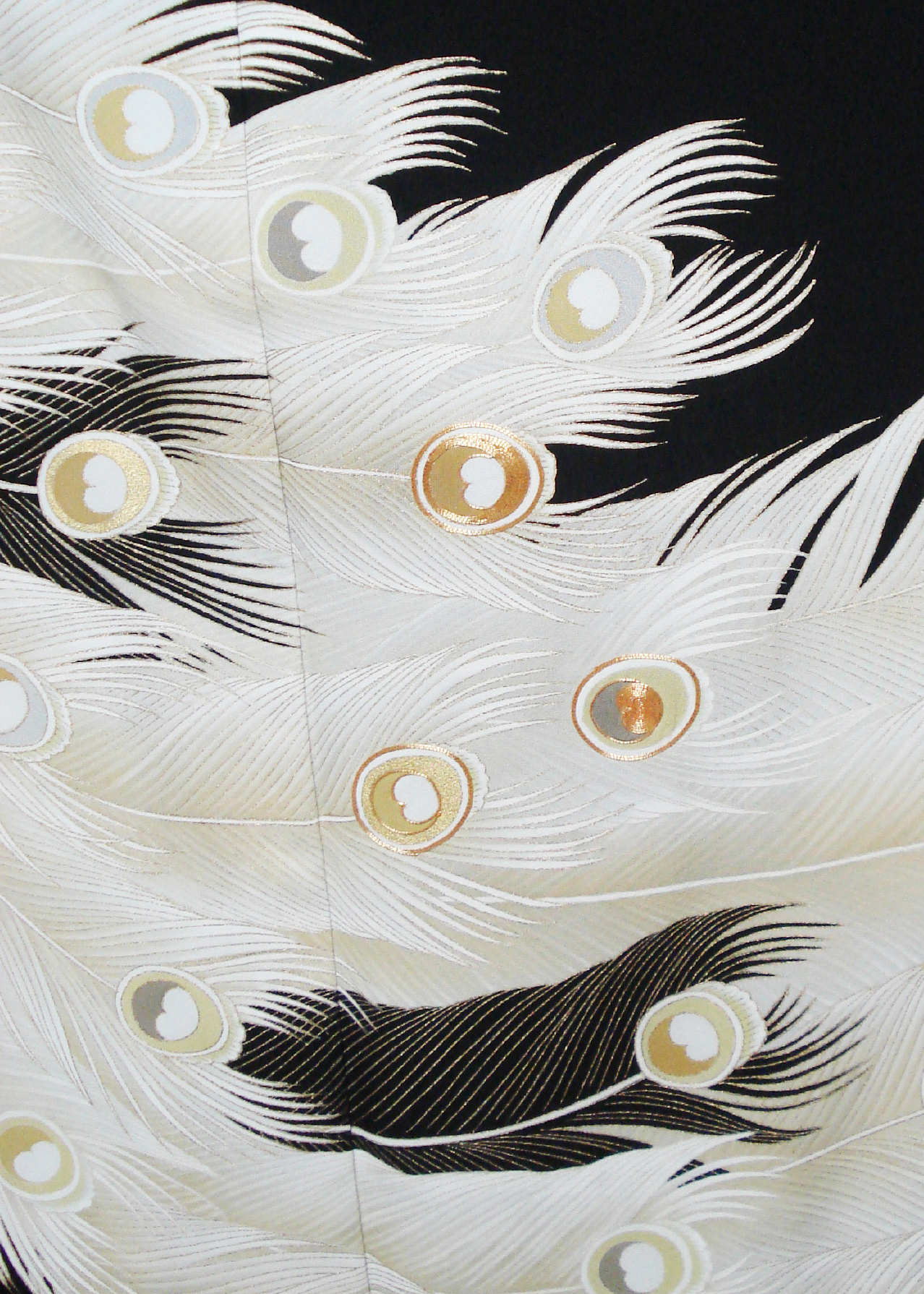 4
4
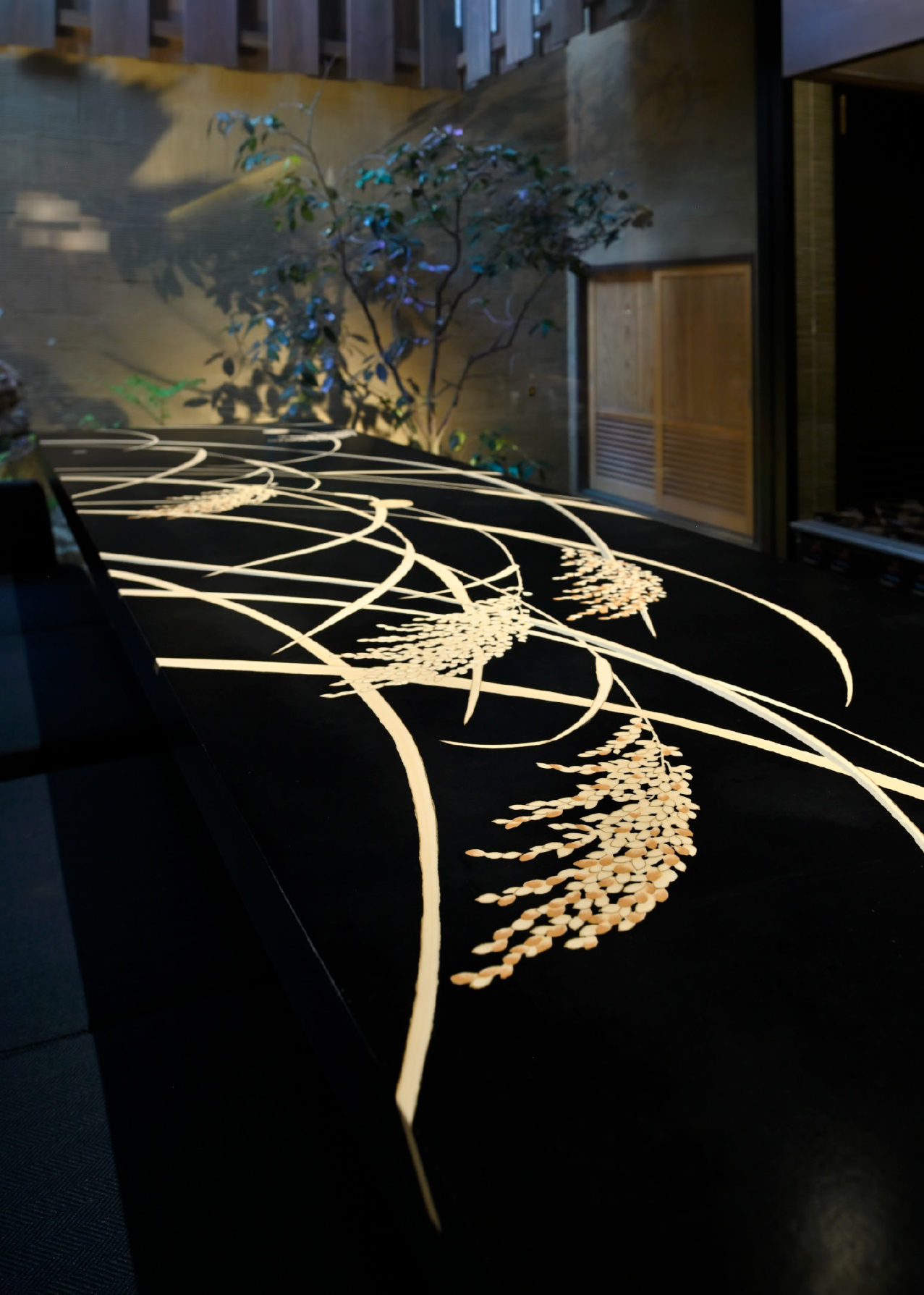 5
5
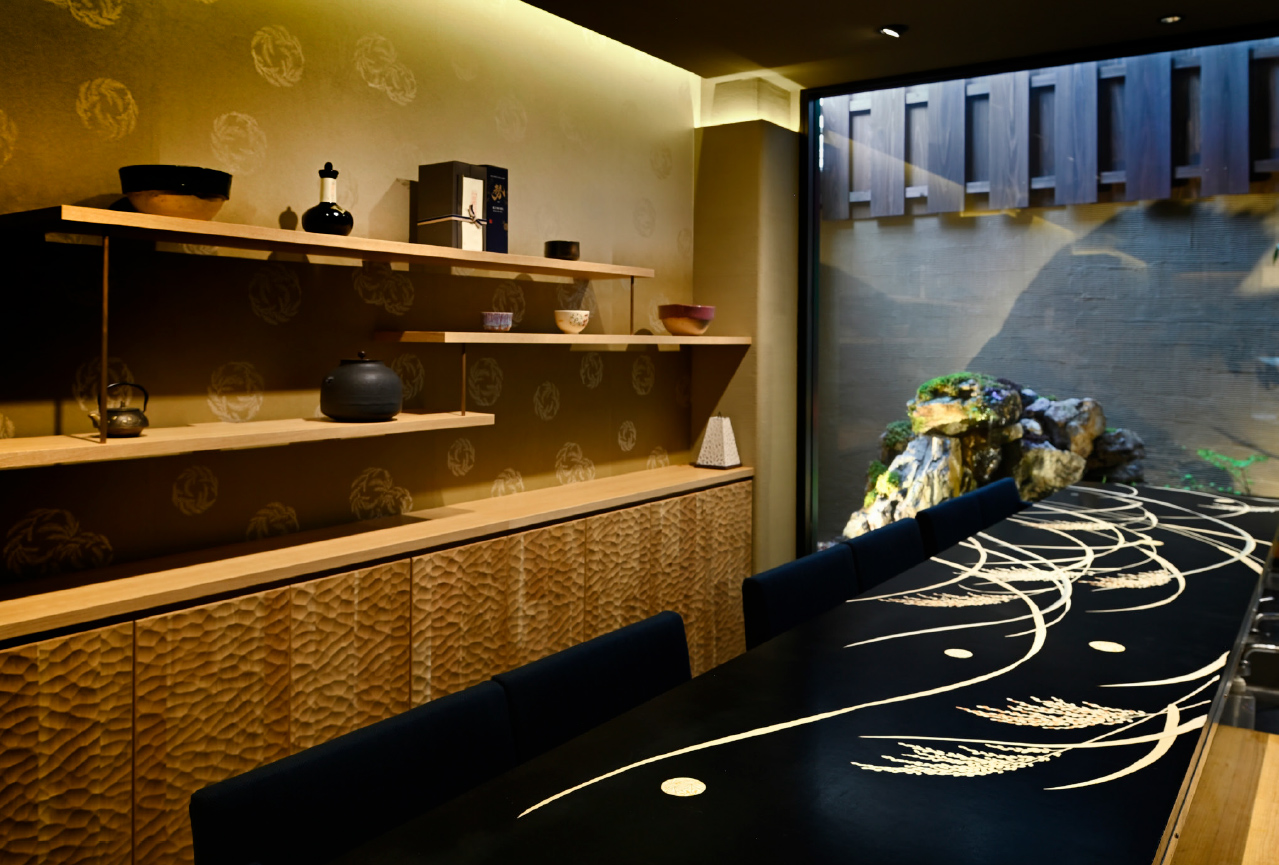 6
6
4,5,6:寿司店のカウンター。手描き友禅を張り、表面に特殊加工を施している。
(4,5,6 すべて吉川染匠株式会社)
4,5,6: A sushi restaurant counter. Hand-painted yuzen are applied and the surface is specially processed. (4,5,6 Yoshikawa Senshō)
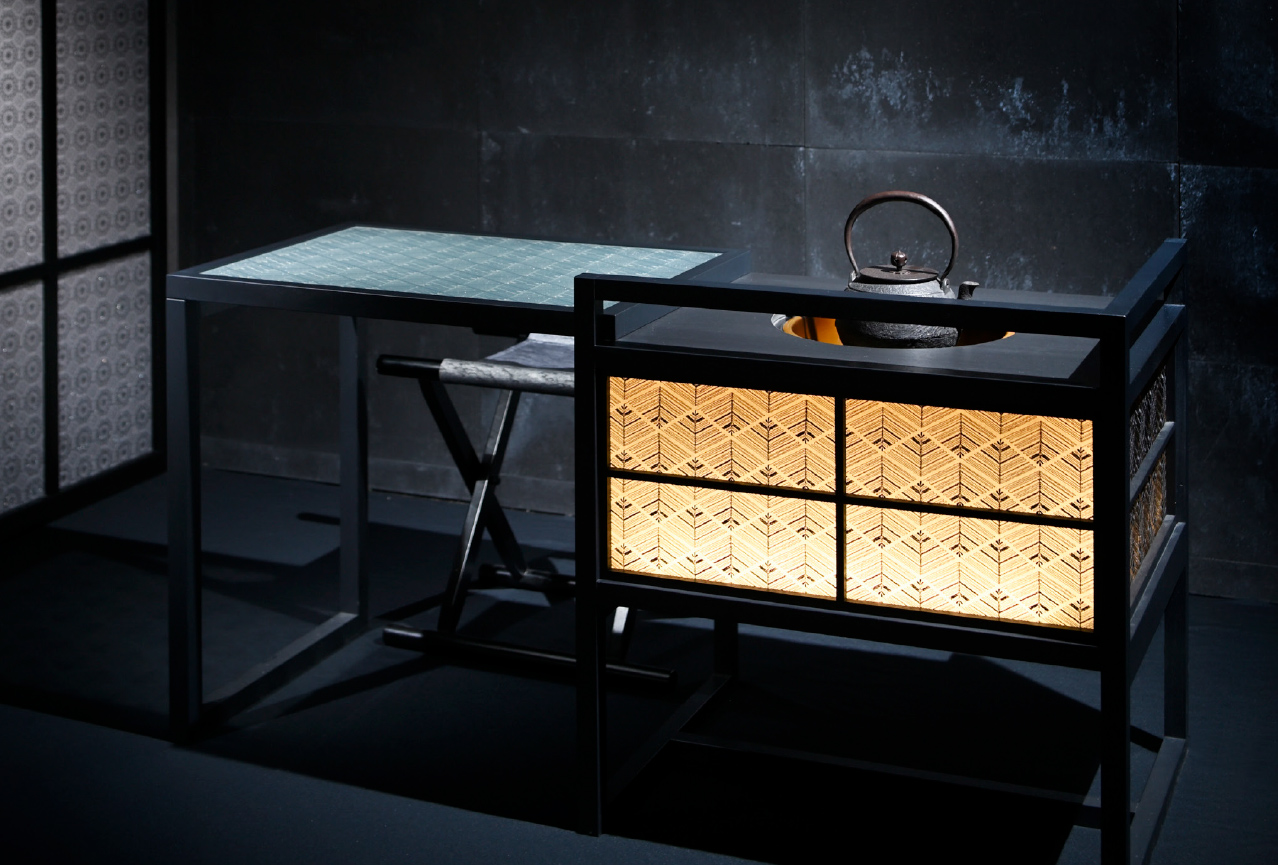 7
7
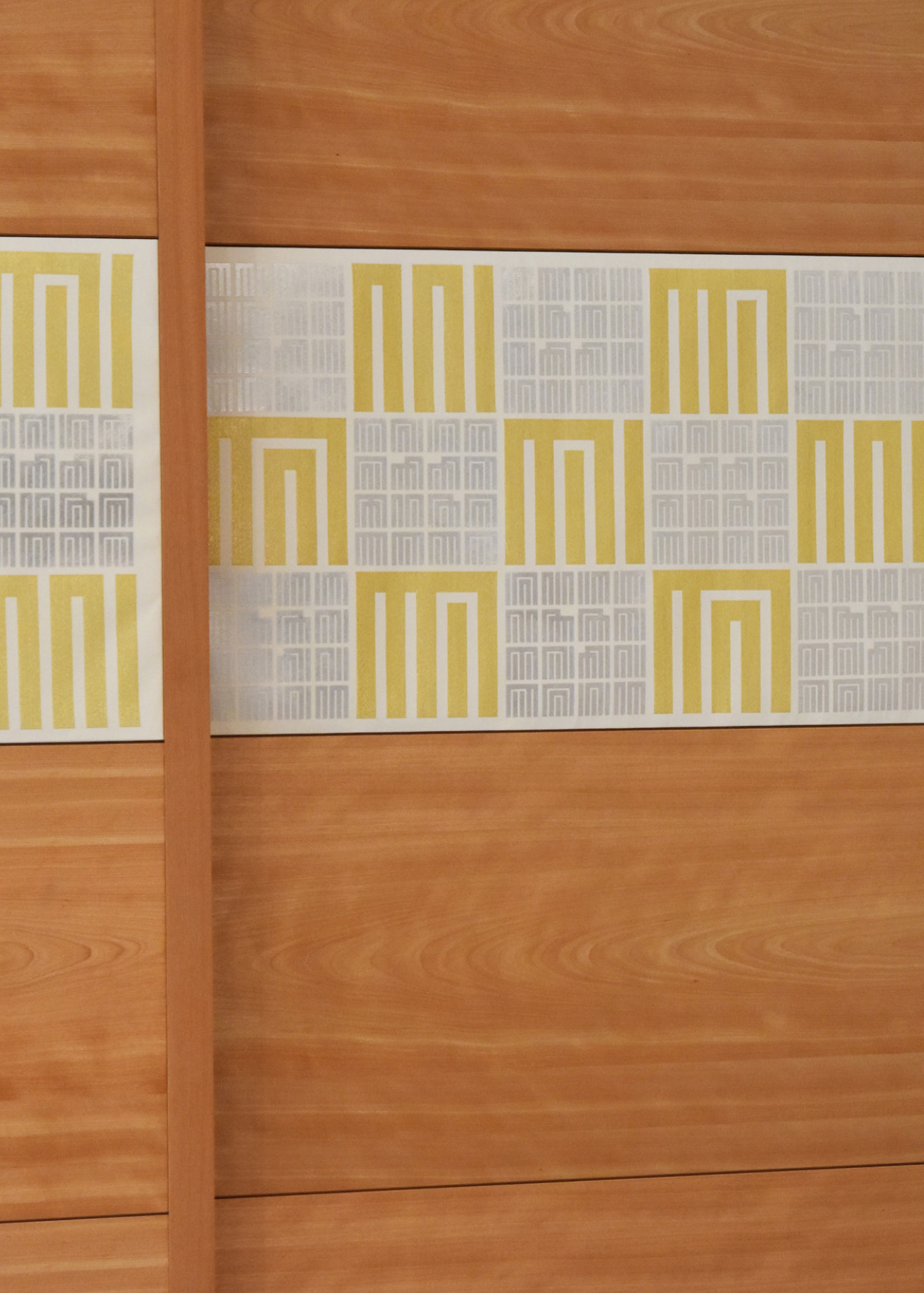 8
8
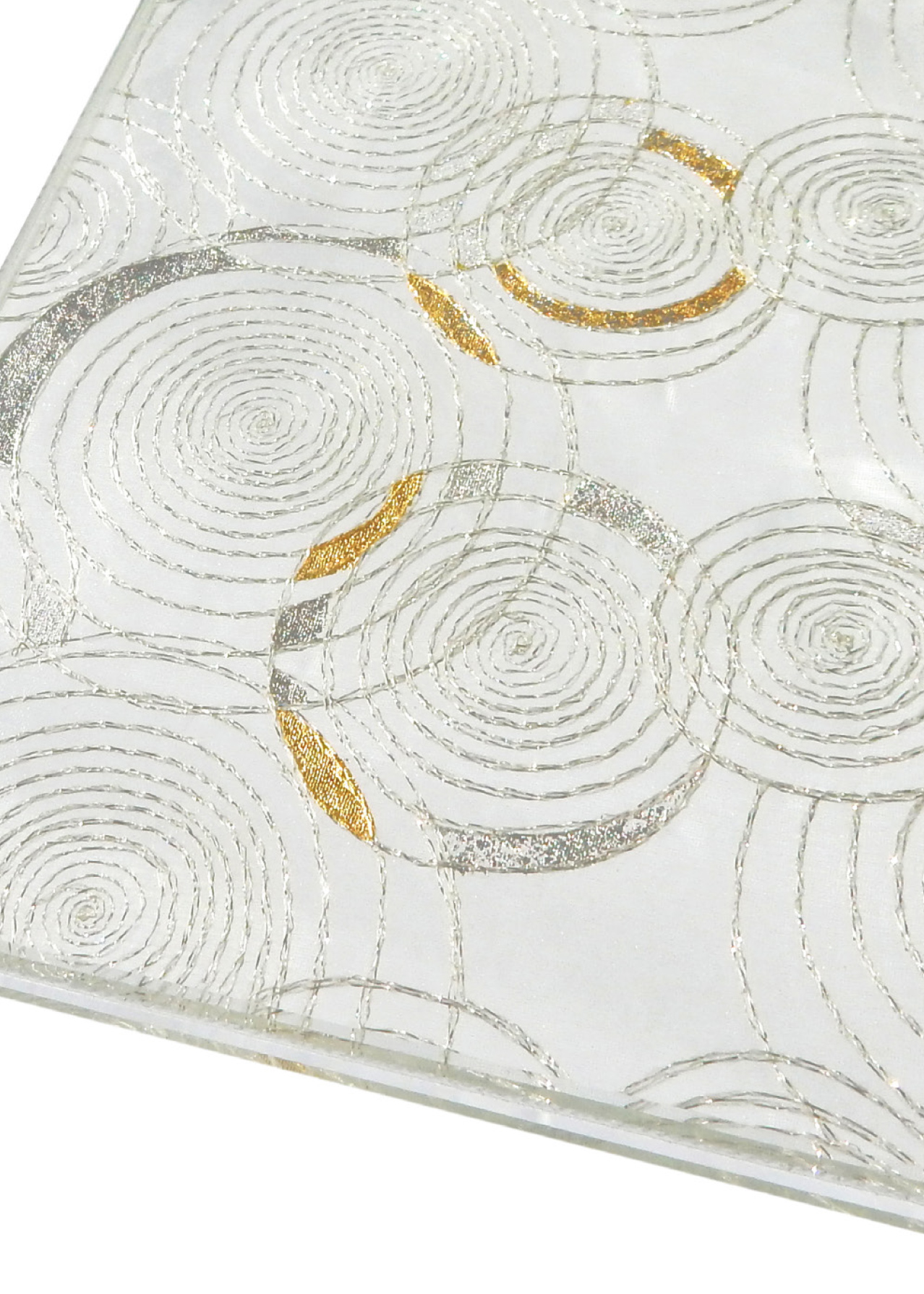 9
9
- : 和装用生地の絹織物を樹脂板に封入した絹障子がアクセントになった立礼卓。立礼卓は、椅子坐で茶会を楽しむためのテーブル。
- : 源氏香をモチーフとした生地をあしらった引き戸。
- : 伝統柄からモダン柄まで、多様なデザインが作られている。
(7,8,9 すべて株式会社伊と幸)
7: Ryu-rei table (used for a style of tea ceremony with table and chairs) accented by a silk shoji, made from Japanese silk enclosed in a resin plate. 8: Sliding door with Genji-ko motif fabric. 9: Various designs are offered with both traditional and modern patterns. (7,8,9 Itoko)

